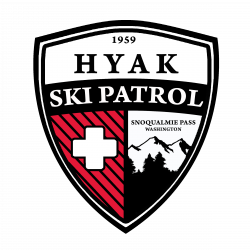Outdoor Emergency Care
Outdoor Emergency Care (OEC) and Cardio Pulmonary Resuscitation (CPR) are taught to all candidates between September and December. The course is taught by doctors, medical specialists and OEC instructors every year, or as candidates are identified and additional patrollers are required. This training requires 120 hours of classroom work, hands on skills, and a written and hands on performance evaluation to pass. Skills are re-certified each year with approximately 12 hours of online/written tests and hands on evaluation.
The 6th edition of the Outdoor Emergency Care manual is what the National Ski Patrol uses to guide it’s curriculum. This 1200+ page tome has recently been released and is now available in either PDF and book formats from the publisher.
The course is a 3 month intensive study on:
- Rescue basics
- Emergency care systems
- Incident command and triage
- Moving and transporting patients
- Anatomy and physiology, patient assessment
- Medical communication and documentation
- Airway management, shock, altered mental status
- Substance abuse and poisoning
- Respiratory emergencies
- Allergies and anaphylaxis
- Cardiovascular emergencies
- Gastrointestinal and genitourinary emergencies
- Principles of trauma, soft-tissue injuries
- Burns, musculoskeletal injuries
- Head and spine injuries
- Face, eye and neck injuries
- Thoracic trauma
- Abdominal and pelvic trauma
- Cold-related emergencies
- Heat-related emergencies
- Plant and animal emergencies
- Altitude-related emergencies
- Water emergencies
- Pediatric emergencies
- Geriatric emergencies
- Outdoor adaptive athletes
- Behavioral emergencies and crisis response
- Obstetric and gynecologic emergencies
This course is similar to what an Emergency Medical Training (EMT) would receive, with an emphasis on outdoor-related injuries. It’s consistent with the Emergency Medical Responder (EMR) standard that matches the training standard of Wilderness First Responder (WFR) but focuses on additional tools, systems, and procedures typical with non-wilderness outdoor settings.
Yearly refreshers are critical for a patrollers continuing education. The OEC manual is broken down into 3 sections. Approximately 1/3 of the content is reviewed and every patroller is re-certified during a full day of hands-on, practical application.
Additionally, we do mini refreshers during the year to keep our skills fresh. Examples might include Sick/Not Sick that helps you assess whether a patient requires Basic Life Support (BLS) or Advanced Life Support (ALS). Or maybe a quick review and hands on practice with a splint. We might also be required to take a course such as Incident Command (ICS 100) with content from FEMA.
Instructor training is offered every year and is highly recommended for every patroller.
